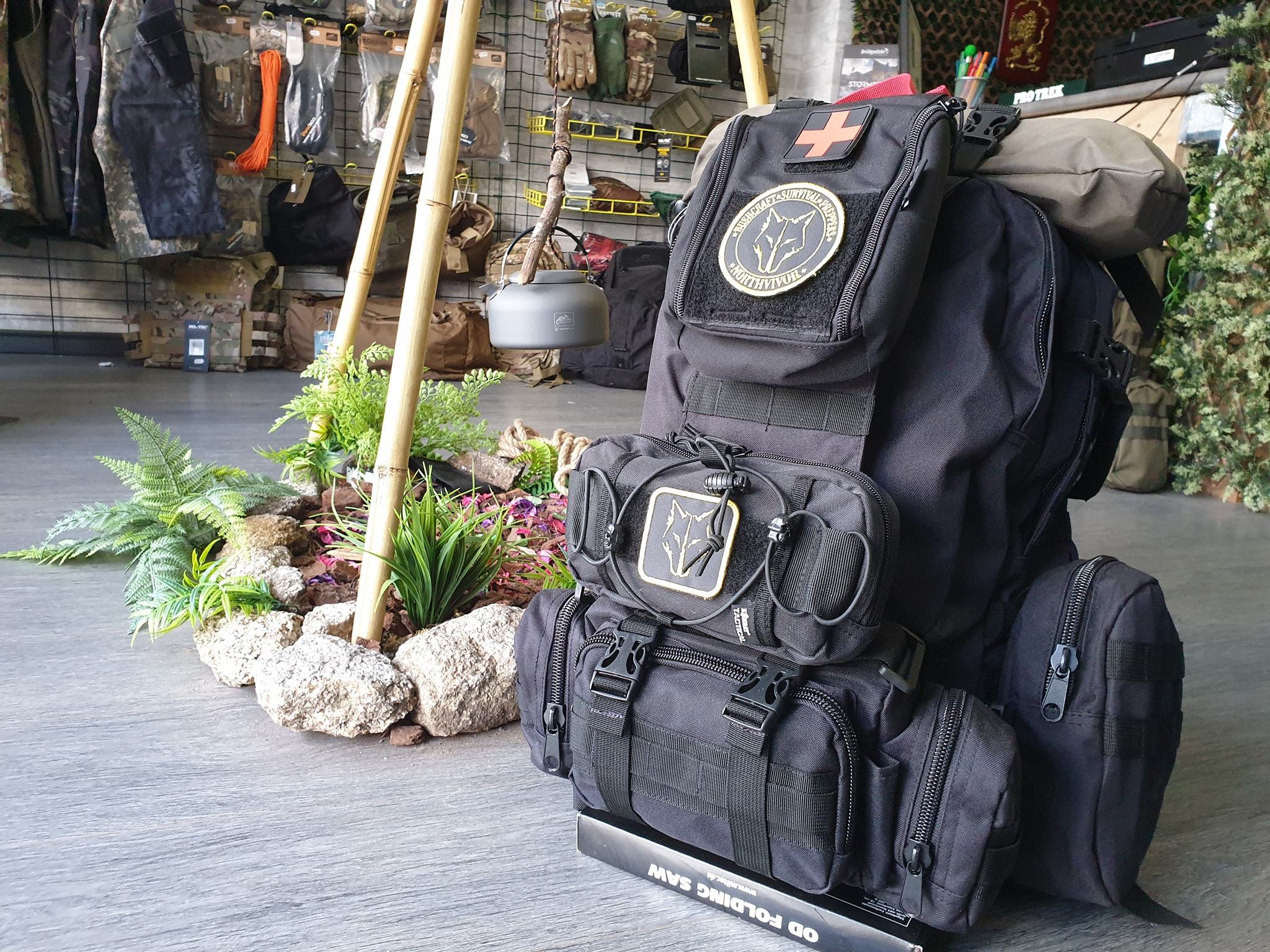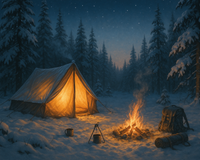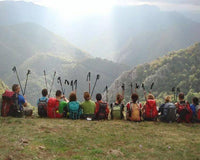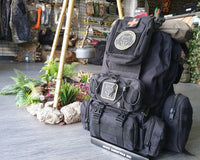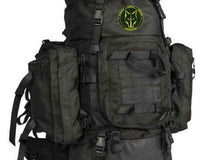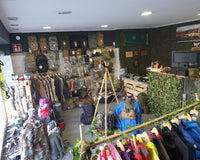A 72-hour backpack or emergency backpack refers to a basic set of essential items, permanently stored in a backpack, primarily in the family home or somewhere easily accessible to cover the needs of all family members in the event of a potential emergency, disaster, etc., for a limited time, between 24 and 72 hours, which is a timeframe that will allow us to reach safety and establish ourselves in a safe area.
Experience with all kinds of disasters has taught us that until rescue and salvage resources reach full response capacity, the population is temporarily left without assistance. (Currently, the response time for emergency units in major catastrophes is 12 hours.) The shortcomings that arise during this time frame can be mitigated or alleviated by having appropriate emergency tools that allow us to help ourselves and put ourselves in a safe position.
Perhaps for this reason, many public and private institutions have positioned themselves in favor of having their own initiatives in this regard.
Cities such as Tokyo, London, Sydney, New York, and Madrid provide information on their websites about a series of resources that all citizens should know and keep in mind; from developing an "emergency plan" to having a "survival module" in their homes, to even "the 48- or 72-hour backpack." Unfortunately, major storms or floods are becoming more frequent these days, with almost no warning.
The minimum aspects to cover in a basic backpack are:
- Water: Minimum 1L per person, and contain elements that allow us to obtain and purify water such as (purification tablets) or (filter systems)
- Food: Freeze-dried food, like NRG-5 emergency rations, is a compressed, high-energy biscuit. It was developed for deployment in the care of victims of natural or man-made disasters, for emergency preparedness, and as a dietary supplement. It can be eaten as biscuits or dissolved in water as a puree. It can last up to 10 years when stored.
- Fire: Essential for survival, along with water and shelter. We should carry all active items in our backpack, such as lighters, igniters, etc., as well as those that allow us to start them ourselves, such as ferroceriums, kindling, fire kits, flints, etc., all of which fit in a small pouch or box.
- Light: In case of emergency, we may need lighting. You can get it in several ways, such as with candles, battery-powered or dynamo flashlights, chemical lights, etc. (If storing battery-powered flashlights, leave them without their respective batteries and put the batteries separately). Always carry two autonomous lighting systems, that is, a flashlight and a headlamp. In case one fails, you will always have the other.
- Radio: To stay informed and follow all the news, we can use a small pocket radio, an MP3 player with a radio and its corresponding headphones. Dynamo-powered radios are a fantastic tool for this task, and can also supply power for other devices. All of these can keep us informed about emergency or rescue teams. A small solar panel charger is also recommended, which we could even put in our backpack while hiking. It can charge our cell phones, flashlights, etc.
- Change of clothes: We try to have a change of clothes for any need, if we get wet, if something tears, etc. And regardless of the time of year, it's important to bring a raincoat and some warm clothing or even gloves to protect our hands. Remember that we lose the most heat through our heads and extremities. Always try to dress and dress warmly in layers.
- Multi-purpose tool: Any tool can be useful for any type of repair, whether it's a screwdriver, a box cutter, pliers, etc. To simplify matters, we can combine all of these into a multi-purpose tool that can cover our basic needs, such as screwdrivers, a saw, a knife, and most even come with a can opener, etc.
- First-aid kit: To deal with incidents, whether it's chafing, wounds, cuts, burns, etc. We can find complete first-aid kits containing a series of basic items such as bandages, plasters, scissors, thermal blankets, and adhesive tape. It's important to complement these kits by adding a few items we deem appropriate, whether it's personalized medication or tablets for headaches, a chronic illness, etc. It's also advisable to keep a list of the items we have and their expiration dates.
- Personal information: Personal identification documents, information about chronic illnesses, photocopies of driver's licenses, social security cards, passports, and ID cards. Also, bring a pencil and paper. It's recommended that all this information be stored in a waterproof bag or even laminated. And don't assume that just because you have this information on your phone means everything is saved. Always carry everything important on paper. In disaster situations, the first thing that goes wrong is technology.
- Cash: To cover any need that arises, and to be able to pay without the need for ATMs or bank cards.
- Personal belongings: This is a section where everyone is free to add whatever they think is appropriate. In these cases, it is recommended to add a copy of your house key.
- Communications systems: A small VHF walkie-talkie will allow us to listen to emergency equipment frequencies and connect with other devices and people. Always keep a note of emergency frequencies on paper.
Remember that with all these elements we must be able to make a basic backpack that is not too bulky, to be able to hold out for a certain time. The quantity of elements and the organization or its configuration depends on the needs of each person, and what they consider most appropriate based on local and personal risks (it is recommended to include elements that we know how to use).
We can always add any additional items we consider necessary, such as a tarp or poncho to make a shelter, a shemag to keep us warm or protect us from smoke or sand, etc. It all depends on the environment we find ourselves in.
It's also a good idea to check the contents periodically and monitor the expiration dates on food and medications, replacing them if necessary. If you think the water might go bad, you can set a small reminder note on your phone or calendar.
And it's a good idea to make a short list as a reminder of what we have in our backpack and place it at the top of the backpack as a checklist and change list.

